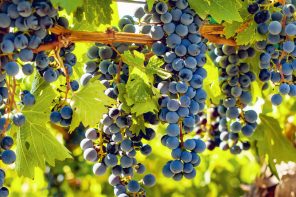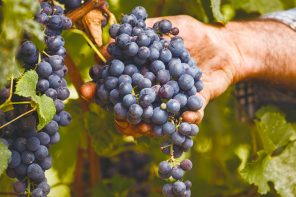Malbec is having a moment. Whether seated at your favorite wine bar or perusing the aisles of your local wine shop, there’s bound to be at least one, if not multiple, Malbec selections. The grape’s rich tannins and robust character create super drinkable wines, full of floral aromas and juicy fruit. When consumed on its own, Malbec is both powerful yet satisfying; when paired with tender steaks and savory meats, the wines are out of this world.
So what’s Malbec’s deal, anyway? Believe it or not, the grape was actually born in France, like so many of our other favorite varieties. Hailing from southwestern France, the grape never seriously took off like its Cabernet Sauvignon and Merlot counterparts, always playing second (or third, or fourth) fiddle to the classic regional blends. Malbec, locally known as Cot, migrated north to the Loire Valley, where varietal bottlings began to make a splash on the market, though with seriously minimal impact. It wasn’t until Malbec was brought over to Argentina that it found its home – and claim to fame – for good.
When it comes to Argentina wine, Mendoza is where it’s at. Approximately two-thirds of the country’s entire wine production comes from this westerly region, with altitudes soaring up to 3,500 feet above sea level. Formerly known as Cuyo, the region claimed the title as the fifth largest wine producing region in the world as of the early 20th century. Grapes such as Criolla Grande and Cereza comprise about 20 percent of the region’s plantings, though Malbec is really where the region’s importance (and quality) lies.
Within the larger Mendoza lies Luján de Cuyo, the region’s first designated appellation. The appellation was officially recognized in 1993, gaining fame for its high-quality Malbec grown on sandy and stony alluvial soils. The appellation’s optimal location near the Andes mountain range provides steep, sloping hillsides; proximity to the Mendoza River provides natural irrigation. The climate of Luján de Cuyo is continental and semi-dry, allowing Malbec to reach ideal ripeness while maintaining a balance of fresh acidity.
Other international varieties, such as Cabernet Sauvignon and Chardonnay, have proven successful in Luján de Cuyo, though it’s the region’s Malbec that keeps consumers coming back for more. The region’s large number of European settlers give a strong Old World influence to the country’s New World fruit, crafting some of America’s most preferred (and affordable) bottles. For some of Mendoza’s most sought-after Malbecs, look no further than Luján de Cuyo. And if you happen to come across a bottle of Luján white – grab one of those too!








